Hanoi, the bustling capital of Vietnam, is a city that seamlessly blends ancient history with modern vibrancy. As you navigate its lively streets, you’ll encounter a rich tapestry of cultural landmarks, mouth-watering cuisine, and scenic vistas that tell the story of a city with a deep-rooted heritage. Whether you’re a first-time visitor or a seasoned traveler, Hanoi offers a plethora of experiences that capture the essence of Vietnam.
In this article, we’ll explore the top 10 most interesting spots to visit in Hanoi. While the list is in no particular order, each location represents a “must-do” experience during your stay. From historic temples and bustling streets to ancient monuments and moderns reminesce of the XIX and XX Centuries history, these attractions showcase the diverse beauty and unique charm of Hanoi. Prepare to immerse yourself in the sights, sounds, and flavors of this captivating city.
Tran Quoc Pagoda
Tran Quoc Pagoda, Hanoi’s oldest Buddhist temple, stands as a majestic symbol of the city’s ancient spiritual traditions. Established in the 6th century, this revered site is situated on a picturesque island in West Lake, accessible by an elegant bridge that offers captivating views of the surrounding waters. The pagoda’s most striking feature is its 11-story Stupa Tower, which soars 15 meters (45 feet) into the air, inviting admiration from afar. Up close, visitors can marvel at the intricate details and the serene Amitabha Buddha statues housed within, each adorned with glistening gemstones that enhance the temple’s timeless beauty. A visit to Tran Quoc Pagoda is not only a journey into Vietnam’s rich cultural and religious history but also a tranquil escape from the hustle and bustle of modern Hanoi.
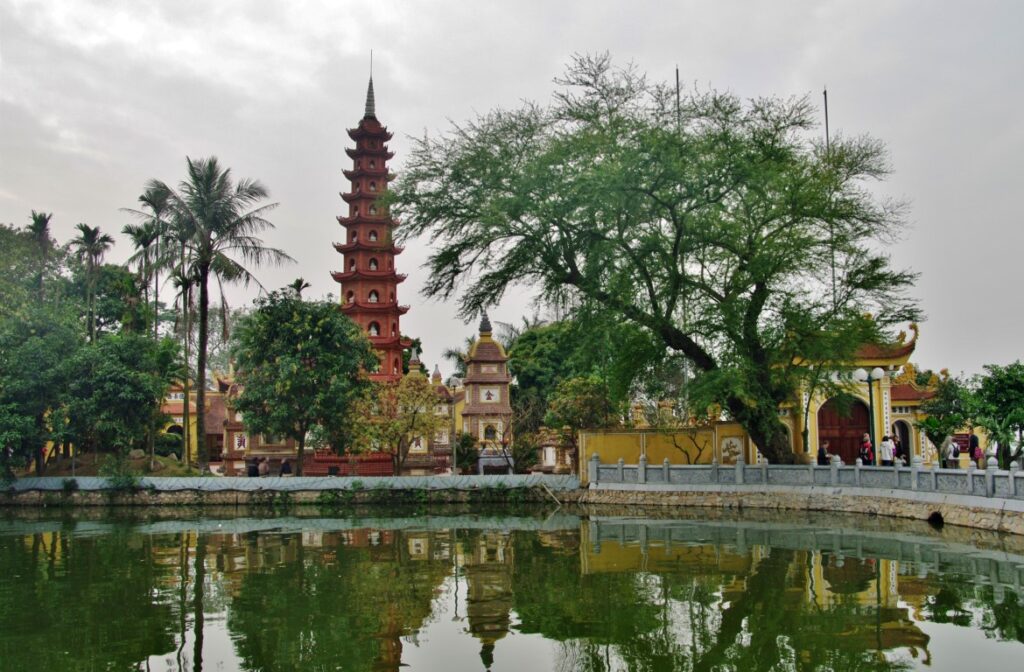
Hanoi Opera House
The Hanoi Opera House, an architectural gem in the heart of Vietnam’s capital, stands as a testament to the city’s vibrant cultural heritage and French colonial history. Constructed between 1901 and 1911, this grand edifice is inspired by the Palais Garnier in Paris and boasts a neoclassical design characterized by elegant columns, ornate balconies, and intricate stonework. The interior is equally impressive, featuring a lavish auditorium adorned with crystal chandeliers and rich red velvet seats that exude an air of opulence. As a premier venue for performing arts, the Hanoi Opera House hosts an array of events, including ballet, opera, symphonies, and traditional Vietnamese performances, making it a cultural hub for both locals and tourists. Whether attending a performance or simply admiring its stunning facade, the Hanoi Opera House offers a glimpse into the artistic soul of the city.
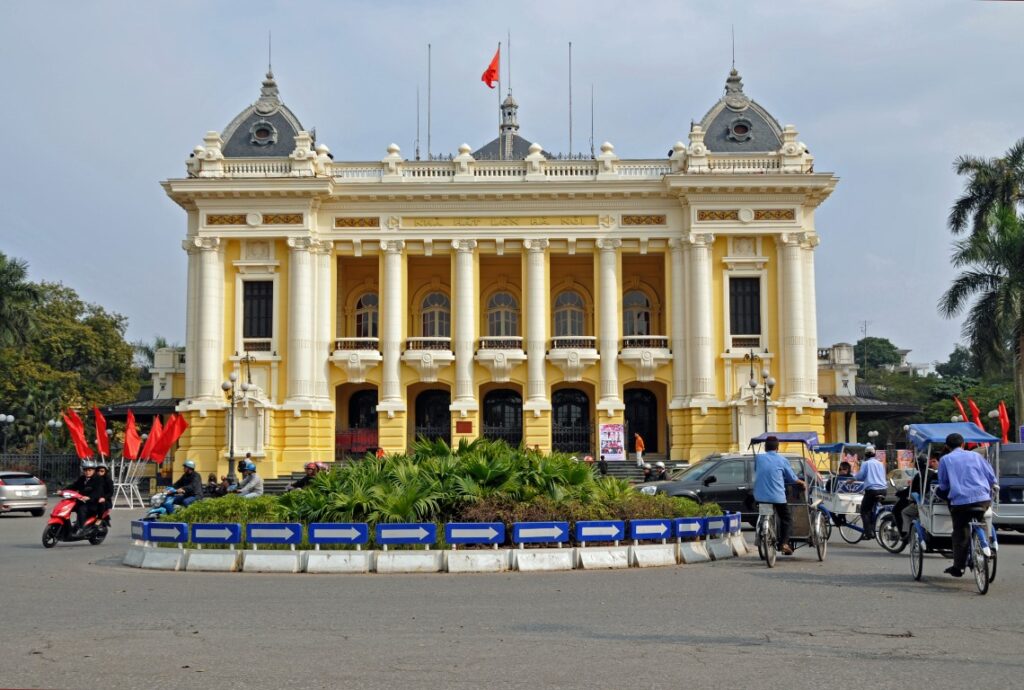
Ho Chi Minh Museum
The Hanoi Ho Chi Minh Museum is a significant cultural and historical landmark dedicated to the life and legacy of Vietnam’s revered leader, Ho Chi Minh. Located in the Ba Dinh district, near the iconic Ho Chi Minh Mausoleum, the museum offers a comprehensive journey through the pivotal moments of Ho Chi Minh’s life and the history of Vietnam’s struggle for independence. Visitors can explore a vast collection of artifacts, documents, and photographs that provide deep insights into his enduring impact on the nation. The museum’s modern architectural design, featuring symbolic elements that reflect the leader’s philosophies and the spirit of Vietnam, enhances the educational and inspirational experience. A visit to the Ho Chi Minh Museum is an enriching opportunity to understand the profound influence of Ho Chi Minh on Vietnam’s path to becoming a unified and independent nation.
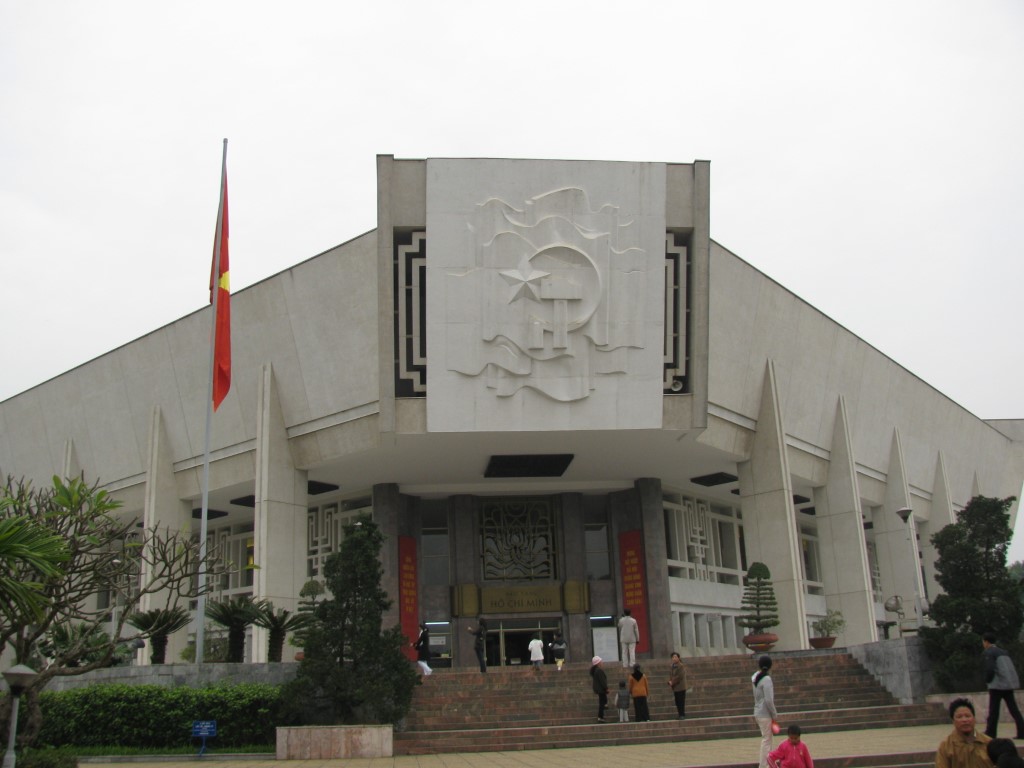
Ho Chi Minh Mausoleum
The Ho Chi Minh Mausoleum in Hanoi is a profound and solemn tribute to Vietnam’s beloved leader, Ho Chi Minh. Located in Ba Dinh Square, the mausoleum stands as a monumental structure where the embalmed body of the revolutionary leader is preserved for public viewing. Constructed between 1973 and 1975, the mausoleum’s design draws inspiration from Lenin’s Mausoleum in Moscow, reflecting both Vietnamese and Soviet architectural influences. Visitors to this iconic site can witness the nation’s deep respect and admiration for “Uncle Ho,” whose efforts were pivotal in Vietnam’s struggle for independence. The mausoleum is surrounded by well-manicured gardens and guarded by soldiers in crisp white uniforms, enhancing the sense of reverence and respect. As one of Hanoi’s most significant historical landmarks, the Ho Chi Minh Mausoleum provides a poignant glimpse into the enduring legacy of a leader who remains a symbol of unity and resilience for the Vietnamese people.
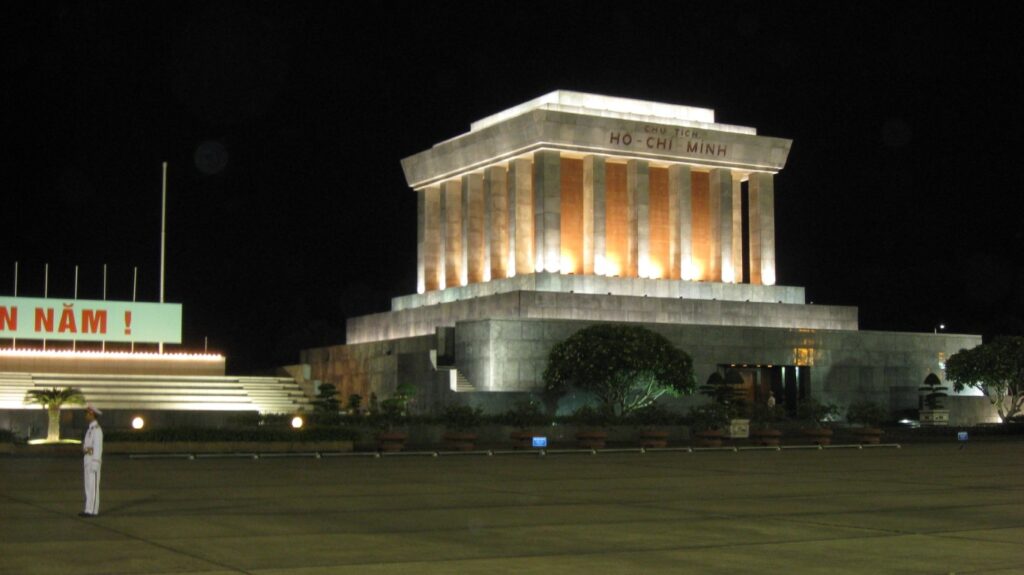
Train Street
Hanoi Train Street, a captivating and unique attraction in the heart of Vietnam’s capital, offers an extraordinary glimpse into the daily life of the city. This narrow residential alley, lined with houses, cafes, and shops, is bisected by an active railway track. Several times a day, a train barrels through the tight corridor, just inches away from the doorsteps of local homes. This thrilling spectacle draws both tourists and photographers eager to capture the juxtaposition of ordinary life and the looming train. The area transforms into a bustling hub where visitors can sip Vietnamese coffee while marveling at the seamless coexistence of the vibrant community and the powerful trains. Despite its popularity, visitors should always prioritize safety and respect the local residents’ space, ensuring that this remarkable slice of Hanoi life remains enjoyable for everyone.
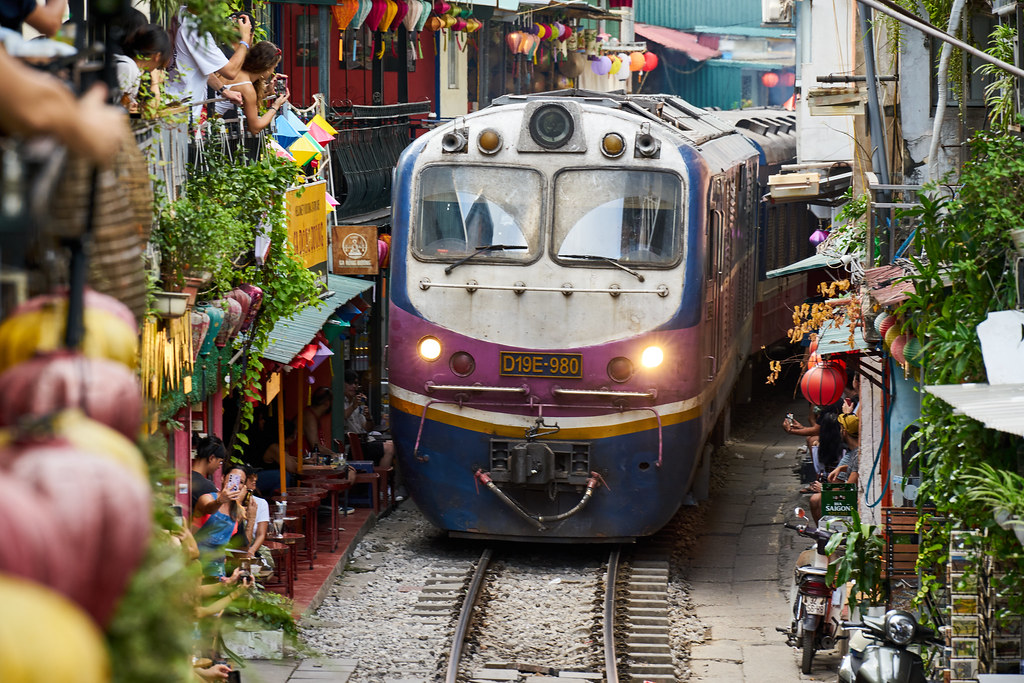
Thang Long Imperial Citadel
The Hanoi Thang Long Imperial Citadel, a UNESCO World Heritage site, is a monumental testament to Vietnam’s rich history and cultural heritage. Established in the 11th century during the Ly Dynasty, this historic complex served as the political and cultural heart of Vietnam for over a millennium. The citadel’s sprawling grounds are home to ancient palaces, majestic gates, and relics that span various dynasties, reflecting the evolution of Vietnamese civilization. Among its notable features are the iconic Flag Tower, the Kinh Thien Palace, and the archaeological treasures unearthed in the 18 Hoang Dieu excavation site. Visitors to the Thang Long Imperial Citadel can immerse themselves in the fascinating narratives of Vietnam’s past, exploring a site that has witnessed centuries of historical events and played a pivotal role in shaping the nation’s identity.
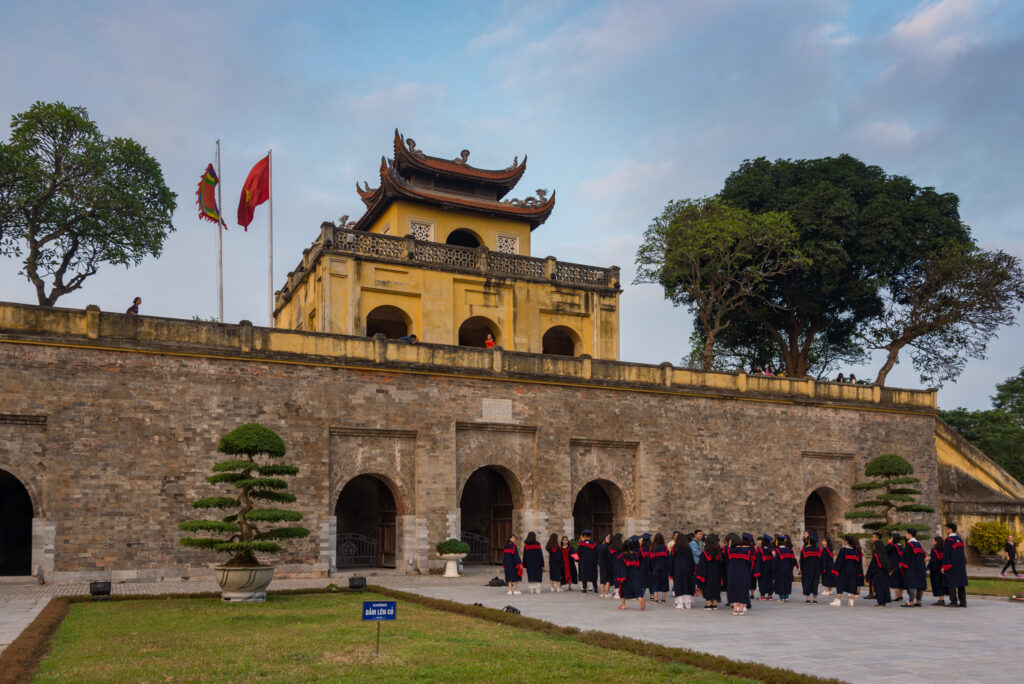
St. Joseph’s Cathedral
Hanoi’s St. Joseph’s Cathedral, an architectural gem in the heart of the Old Quarter, stands as a testament to the city’s colonial history and religious diversity. Completed in 1886, this neo-Gothic masterpiece bears a striking resemblance to the famed Notre-Dame Cathedral in Paris, with its twin bell towers, ornate façade, and large stained-glass windows. The cathedral’s grandeur is further enhanced by its intricate interior, featuring high vaulted ceilings, elegant arches, and a serene atmosphere that offers a peaceful retreat from the bustling streets outside. As one of the oldest churches in Hanoi, St. Joseph’s Cathedral not only serves as a place of worship but also as a cultural landmark, reflecting the blend of Western and Eastern influences that define the city’s unique character.
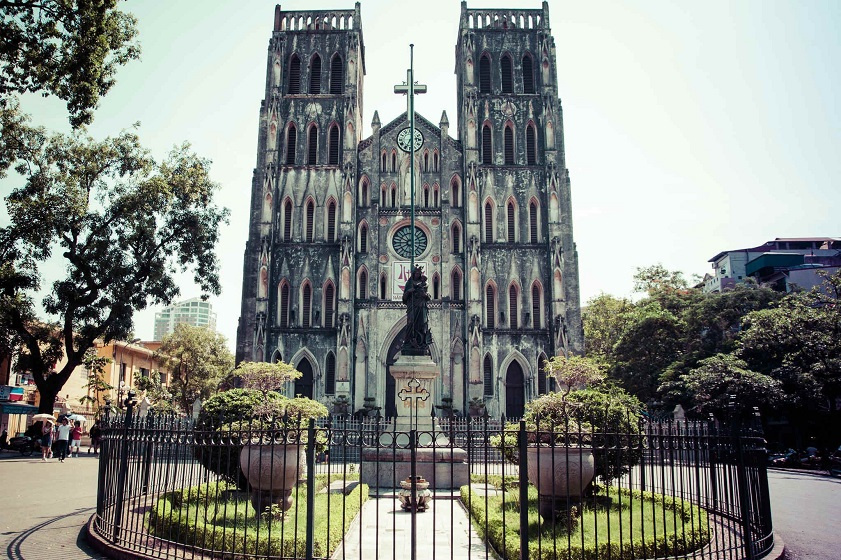
Thang Long Water Puppet Theater
The Hanoi Thang Long Water Puppet Theater offers a captivating glimpse into Vietnam’s rich cultural heritage through its unique and enchanting water puppet performances. Situated in the heart of Hanoi, this renowned theater continues a tradition that dates back over a thousand years to the rice paddies of the Red River Delta. The performances feature intricately crafted wooden puppets that seem to dance effortlessly on the water’s surface, brought to life by skilled puppeteers hidden behind a screen. Accompanied by traditional Vietnamese music played on authentic instruments, the shows narrate folklore, legends, and scenes from rural life, providing audiences with an immersive and entertaining cultural experience. Visiting the Hanoi Thang Long Water Puppet Theater is a must for anyone seeking to appreciate the artistry and storytelling of Vietnam’s past in a truly unique and mesmerizing way.
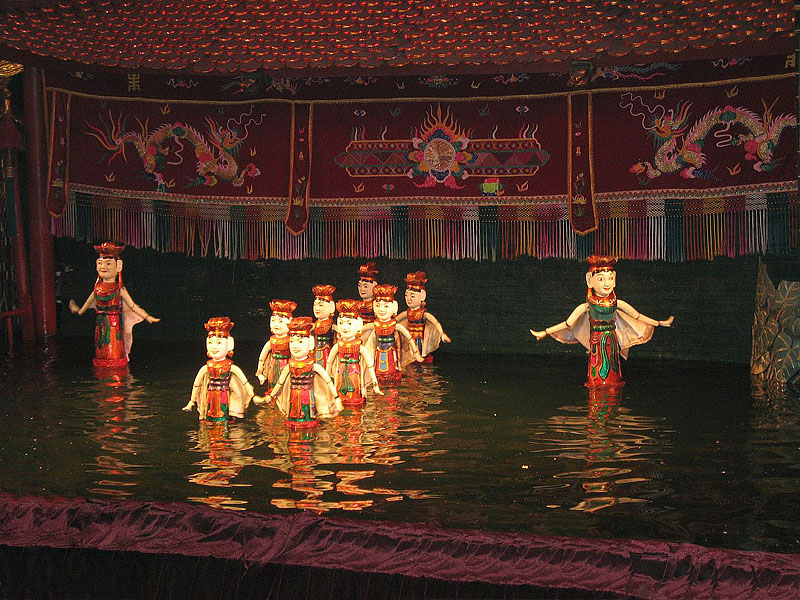
Temple of Literature
The Hanoi Temple of Literature, Vietnam’s first national university, is a stunning monument to the country’s scholarly and cultural heritage. Established in 1070 and dedicated to Confucius, this historic site served as a center for learning and intellectual pursuit for over seven centuries. Located in the heart of Hanoi, the temple complex features beautifully preserved traditional Vietnamese architecture, including ornate pavilions, serene courtyards, and tranquil gardens. As visitors stroll through the temple’s five courtyards, they encounter ancient steles, each inscribed with the names of successful scholars, and appreciate the serene atmosphere that has inspired generations of students. The Temple of Literature is not only a tribute to Vietnam’s rich academic history but also a peaceful retreat that offers a glimpse into the country’s profound respect for education and knowledge.
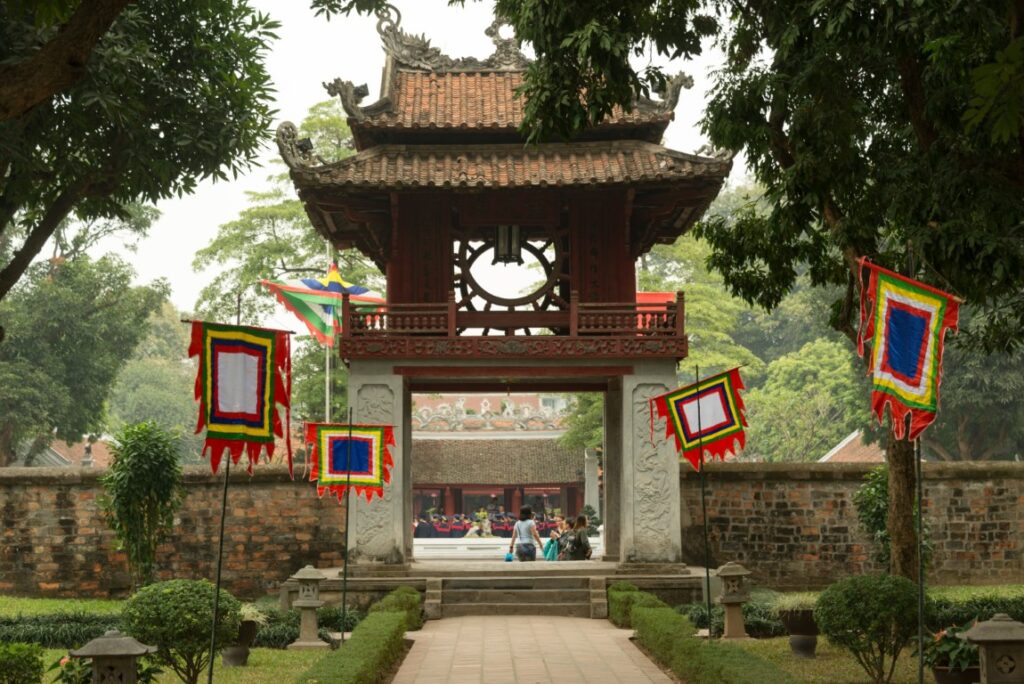
Hanoi’s Old Quarter
Hanoi’s Old Quarter, a vibrant and bustling district in the heart of Vietnam’s capital, is a mesmerizing blend of history, culture, and commerce. This labyrinthine neighborhood, with its narrow streets and centuries-old architecture, offers a glimpse into the city’s rich past. Each street in the Old Quarter is traditionally named after the trade or craft that was historically practiced there, creating a unique tapestry of markets and artisan shops. Visitors can explore an array of local goods, from traditional silk and handicrafts to delicious street food that tantalizes the taste buds. The Old Quarter’s lively atmosphere is complemented by its charming colonial buildings, ancient temples, and pagodas, making it a must-visit destination for anyone looking to experience the authentic essence of Hanoi. Whether you’re wandering through the bustling night market, sipping on a cup of Vietnamese coffee, or simply soaking in the vibrant street scenes, Hanoi’s Old Quarter promises an unforgettable journey through time.
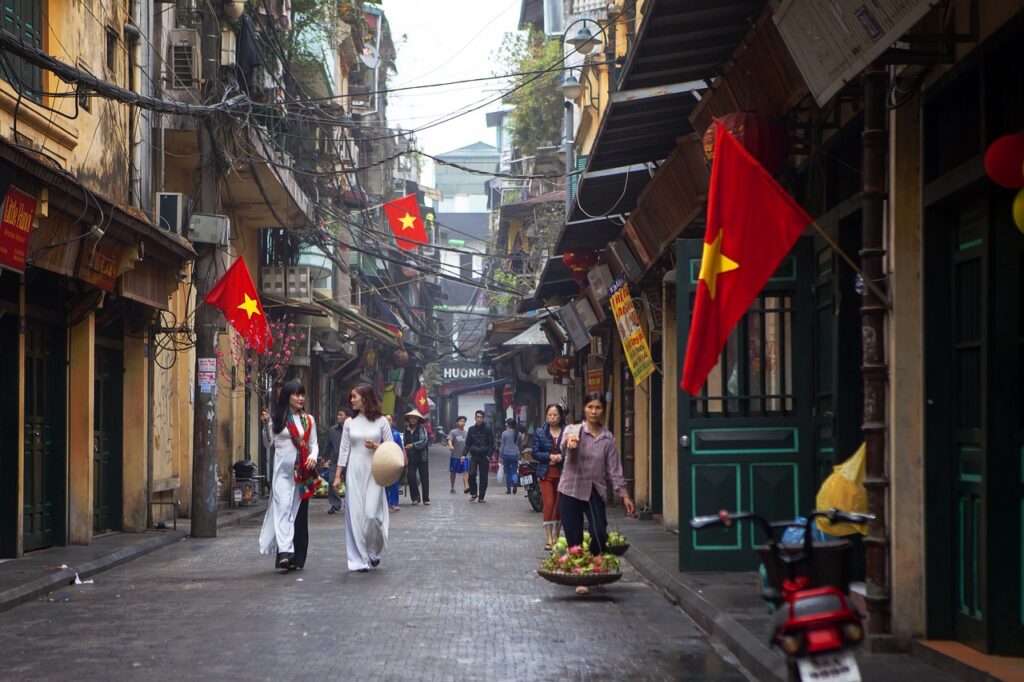
In conclusion, Hanoi is a city that effortlessly blends the old with the new, offering travelers a unique journey through time and culture. From the ancient Tran Quoc Pagoda and the historic Thang Long Imperial Citadel to the charming streets of the Old Quarter and the French colonial elegance of the Hanoi Opera House, the city is brimming with must-see attractions. Each landmark tells a story of Hanoi’s rich heritage and dynamic evolution, making every visit an enriching experience. Whether you are exploring the solemn grounds of the Ho Chi Minh Mausoleum or capturing the vibrant energy of Train Street, Hanoi promises an adventure that engages all the senses. With its captivating mix of history, culture, and modern vibrancy, Hanoi stands as a testament to Vietnam’s enduring spirit and charm, ensuring that every visitor leaves with unforgettable memories.
 Asia Pacific Travel Co., Ltd, established in 2002 under the visionary leadership of Mr. Nguyen Giang Nam, stands as a testament to the evolution and growth of the inbound tourism industry in Vietnam. With over two decades of operation, this pioneering travel agency has not only offered immersive experiences ranging from short-day tours to the picturesque landscapes of Ha Long, Hoa Lu, and Ninh Binh, but has also expanded its reach with representative offices in major Vietnamese cities. Their commitment to harnessing the power of information technology and relentless pursuit of professional excellence has made them a preferred choice for both domestic and global travelers, keen on discovering the authentic charm of Vietnam.
Asia Pacific Travel Co., Ltd, established in 2002 under the visionary leadership of Mr. Nguyen Giang Nam, stands as a testament to the evolution and growth of the inbound tourism industry in Vietnam. With over two decades of operation, this pioneering travel agency has not only offered immersive experiences ranging from short-day tours to the picturesque landscapes of Ha Long, Hoa Lu, and Ninh Binh, but has also expanded its reach with representative offices in major Vietnamese cities. Their commitment to harnessing the power of information technology and relentless pursuit of professional excellence has made them a preferred choice for both domestic and global travelers, keen on discovering the authentic charm of Vietnam.


